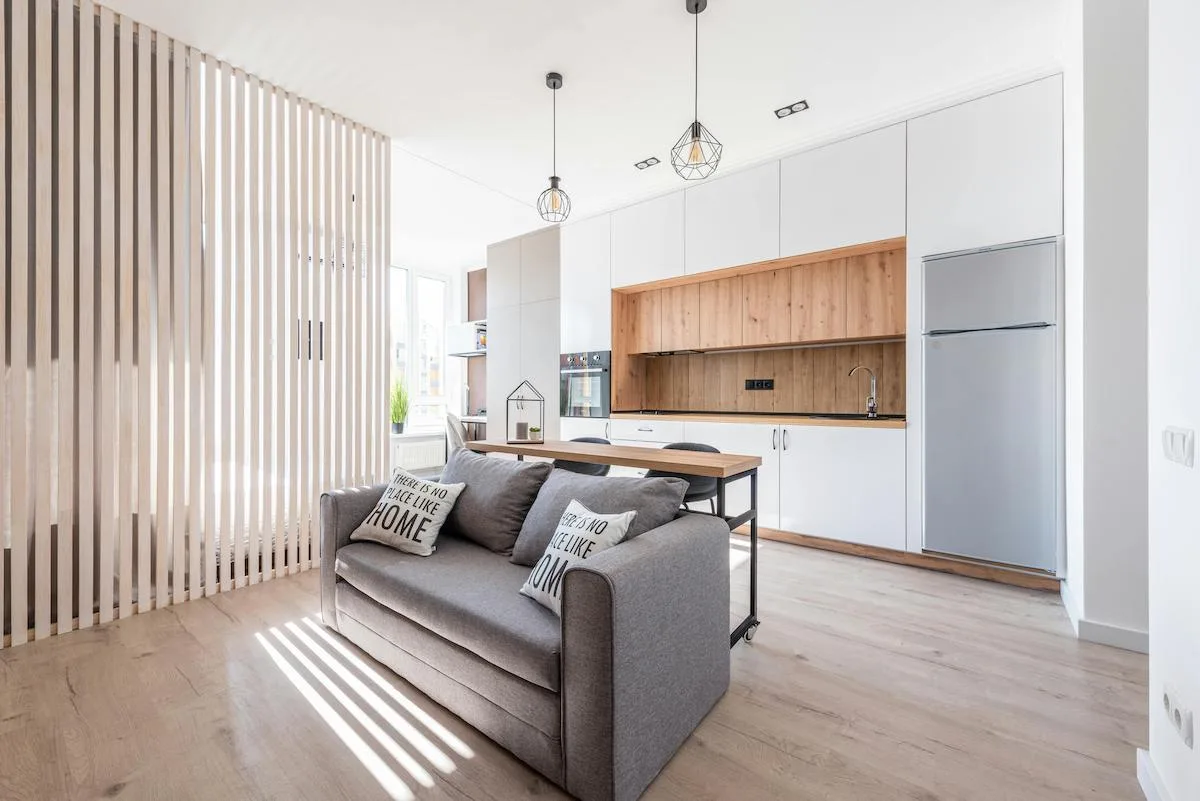Quick Answer:
The best way to rent an apartment as a student is to set a budget of around 30% of your income, prepare key documents (your ID, proof of enrollment, income, or funding letters) early, use apartment search platforms with student-friendly filters and research as much as you can, find roommates you can split the rent with, and apply with a co-signer or guarantor if needed. Start searching 6–8 weeks before move-in to secure the best options.
What we cover in this guide:
Renting an apartment as a student comes with challenges, like limited credit, part-time jobs, or income tied to scholarships or family support. But thousands of students sign leases every semester. With the right preparation, you can compete with full-time renters and lock in housing that fits your budget and lifestyle.
This guide will walk you through, step by step, the process of renting an apartment as a student in 2025.
- Setting an apartment budget
- Gathering the documents you’ll need to rent as a student
- Understand the types of rentals that are best for students
- Prepping for rental applications as a student with little or no credit
- Searching for student apartments
- Touring apartments as a student
- Applying for a student apartment
- Reading through a lease
- Apartment searching timeline for students
- Tips for saving money as a student renter
- FAQs about renting as a student
Step 1: How should students set an apartment budget?
To rent successfully, start with a budget that you can maintain throughout the academic year.
- Follow the 30% rule: Spend no more than 30% of your reliable monthly income or funding on rent.
- Count all sources of support: Part-time jobs, stipends, scholarships, grants, or family contributions.
- Plan for upfront costs: First month’s rent, security deposit, and application fees ($50–$200).
- Don’t forget recurring expenses, such as utilities, internet, renters’ insurance, and transportation.
- Roommates = saved money. Splitting a two-bedroom is often 30–50% cheaper per person than renting solo.
👉 Best way for students to rent affordably: lock in roommates early, agree on budget ranges, and set alerts on Zumper to catch listings within that range.
For more budgeting help, check out the Federal Student Aid website. They have additional budgeting resources created specifically for students.
Step 2: What documents do students need to rent an apartment?
Landlords often approve apartments more quickly when submitted applications are complete with all necessary documents from the get-go. Create a student-ready rental packet with:
- Government ID (license or passport)
- Proof of enrollment (acceptance letter or class schedule)
- Income verification (pay stubs, stipend/grant award, scholarship letter, or parental support letter)
- Bank statements from the last 2–3 months
- References from prior landlords, RAs, or employers
- Co-signer/guarantor ID and proof of income
For international students:
- Passport + visa
- I-20 or DS-2019 form
- Proof of funds in a U.S. bank account
- International credit report, if available
👉 To rent an apartment as a student, you should gather all the documents you might need before applying. This level of preparation shows you are reliabile as a renter and could speed up the approval process.
Step 3: What rental options work best for students?
Roommate arrangements:
- Joint lease: Everyone shares responsibility for the full rent.
- Individual lease: You’re only liable for your portion.
Lease terms:
- 9-month leases match academic years.
- 12-month leases may offer better pricing.
- Month-to-month leases can provide more flexibility but may cost you more each month.
Subletting: Check policies for summer or study-abroad flexibility.
Step 4: How can students rent an apartment with little income or credit?
This is the biggest student challenge—but there are solutions:
- Add a co-signer/guarantor: A creditworthy adult takes financial responsibility.
- Show proof of funds: Bank balances covering 3–6 months’ rent.
- Provide official letters: Job offer, stipend, or scholarship awards.
- Offer a larger deposit, Where legally allowed.
- Use references: Professors, coaches, or supervisors vouching for reliability.
👉 The best way for students to get approved: pair a guarantor with clear proof of funding.

Step 5: Where can you search for student apartments?
Students can rent apartments more efficiently by focusing on:
- University housing offices and bulletin boards
- Online rental platforms with student-friendly filters like Zumper
- Local property managers near campus
- Student groups and forums
- Saved searches with alerts so you’re notified instantly when a unit appears
Key filters to use: price, number of bedrooms, commute time, pet policy, included utilities, and parking.
Step 6: How should students tour apartments?
Virtual tours first: Narrow your options remotely. These are reliable when done the right way.
In-person tours next: Visit top choices and check:
- Water pressure, lighting, and outlets
- Noise levels at different times
- Cell service and Wi-Fi reliability
- Security features (locks, lighting)
- Appliance condition and storage space
Ask property managers:
- Which utilities are included?
- Is renters’ insurance required?
- What’s the maintenance response time?
- Are sublets or guests allowed?
Step 7: How do students submit a winning application?
- Apply the same day you tour.
- Complete every field correctly.
- Upload all documents.
- Add a short cover note explaining your student status and funding.
Sample student cover letter:
“I’m a junior at [university], funded by a $12,000 annual stipend and a part-time job. My parent [name] will co-sign, and I can move in on August 1. I’ve attached all documentation and references.”
Step 8: What should students check before signing a lease?
Always review:
- Total move-in costs and payment schedule
- Lease length and renewal rules
- Utility responsibilities
- Subletting and early termination terms
- Pet policies and fees
- Maintenance procedures
👉 To protect your deposit, inspect and photograph everything on move-in day.
Special rental scenarios for students
- Graduate students with stipends: Provide official award letters as proof of income.
- International students without SSN: Request manual screening and add a guarantor if needed.
- Summer housing: Look for short-term leases or student sublets.
When should students start looking for an apartment?
Here’s a recommended application timeline for student renters:
- 8–6 weeks before move-in: Set your budget, prep your documents, and create saved searches.
- 6–4 weeks before: Tour and compare your top choices, confirm co-signer availability, and submit your application.
- 2 weeks before: Sign the lease, pay deposits, and set up utilities.
- Move-in week: Document apartment condition and collect keys.
Tips to save money as a student renter
- Start searching early before peak season
- Choose neighborhoods near transit instead of the campus core
- Look for utilities-included properties
- Negotiate for smaller deposits or bundled amenities
- Find roommates to split the monthly rent.
Red flags to avoid: cash-only landlords, no written lease, refusal to show the unit, or multiple bad reviews.
FAQs about renting as a student
Can students rent an apartment without a credit history?
Yes. Many landlords allow it if you provide a co-signer, proof of funds, or references.
How much income do students need to qualify for an apartment?
Typically, 2.5 to 3× the rent, from you or your guarantor. Stipends, grants, and scholarships can count as income.
What if I don’t have a Social Security Number?
International students can rent with a passport, visa paperwork, proof of funds, and sometimes a guarantor.
Should I use a co-signer or guarantor as a student renter?
Yes, if you have limited income or credit. A guarantor makes approval more likely.
When should students start looking for apartments?
Begin 6–8 weeks before move-in to leave enough time for touring, applying, and lease signing.



